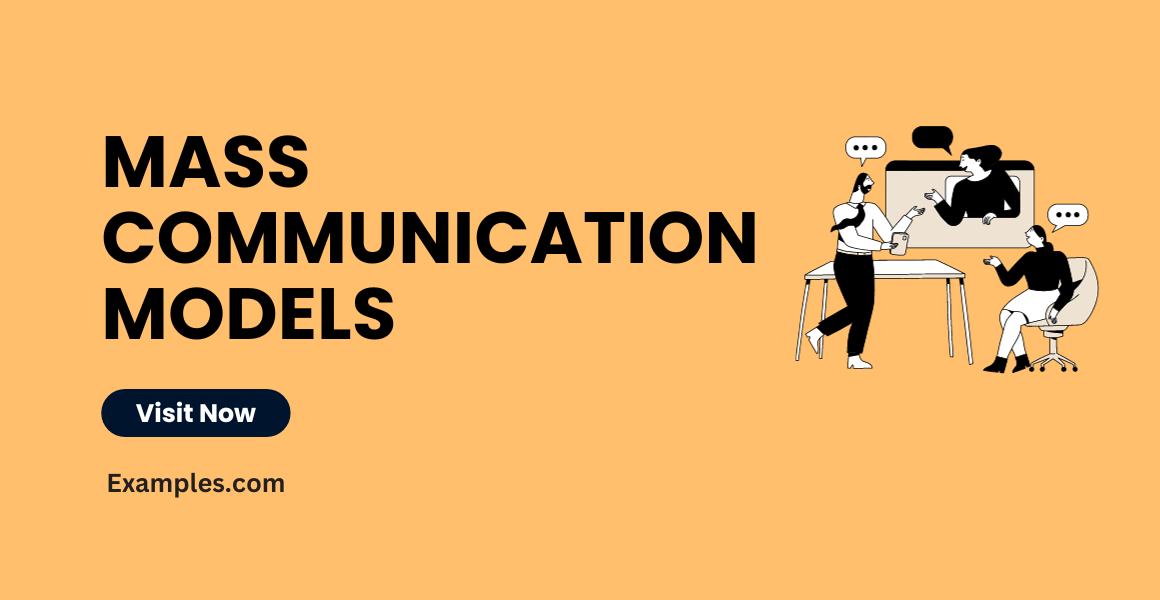9+ Models of Mass Communication Examples
Discover the intricate world of Models of Mass Communication through this comprehensive guide. Delve into various Mass Communication Examples, learning how each model shapes public discourse and media consumption. Whether it’s the Two-Step Flow Theory in social media or the Uses and Gratifications Theory in television broadcasting, understanding these models is crucial for both academics and practitioners. This guide not only explores theoretical aspects but also offers real-life applications, making it an essential resource for anyone interested in the dynamics of mass communication.
Major Mass Communication Models
In the field of Mass Communication, various models serve as frameworks to understand how information is disseminated and received. Let’s delve into some major models and their significance
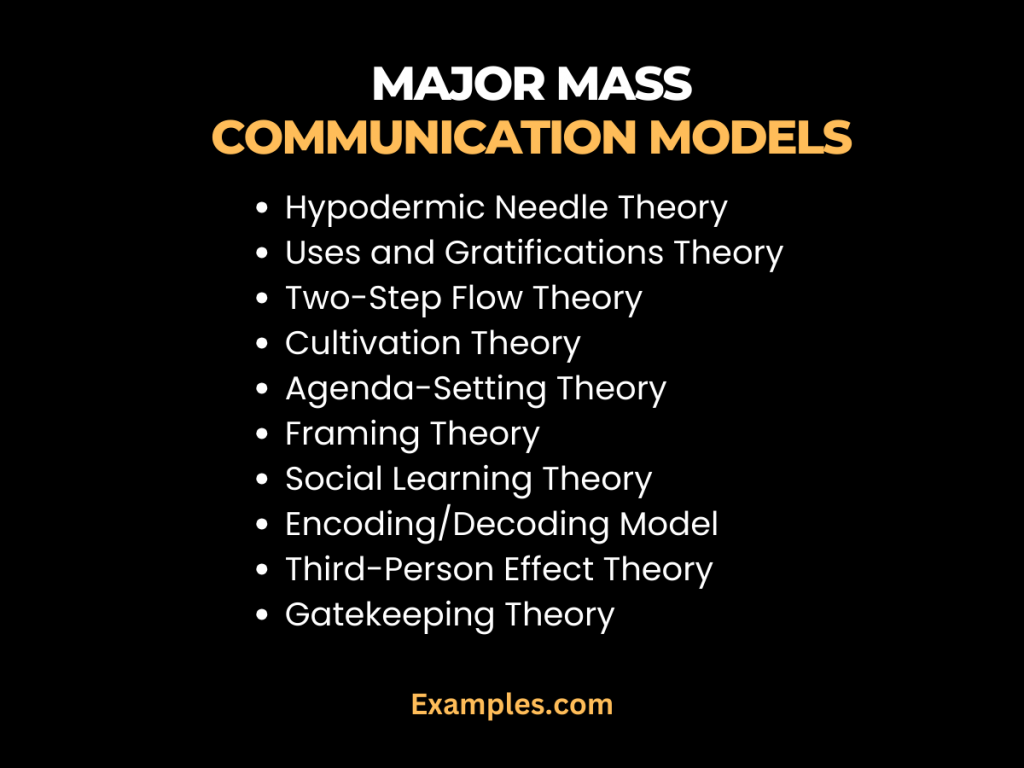
Hypodermic Needle Theory
The Hypodermic Needle Theory, a pivotal concept in Models of Mass Communication, suggests a direct, powerful influence of media on audiences. This theory, likening media to a hypodermic needle injecting information into a passive audience, is crucial in understanding the dynamics of mass media influence. It implies that media messages are directly received and wholly accepted by the audience.
Example: In a classic Mass Communication Scenario, consider a national health campaign using television to disseminate information about a new flu vaccine. The Hypodermic Needle Theory would argue that the public, exposed to these messages, would uniformly accept and act upon the information, leading to a significant increase in vaccination rates. This exemplifies the theory’s application in real-world mass communication, highlighting its significance in shaping public perception and behavior.
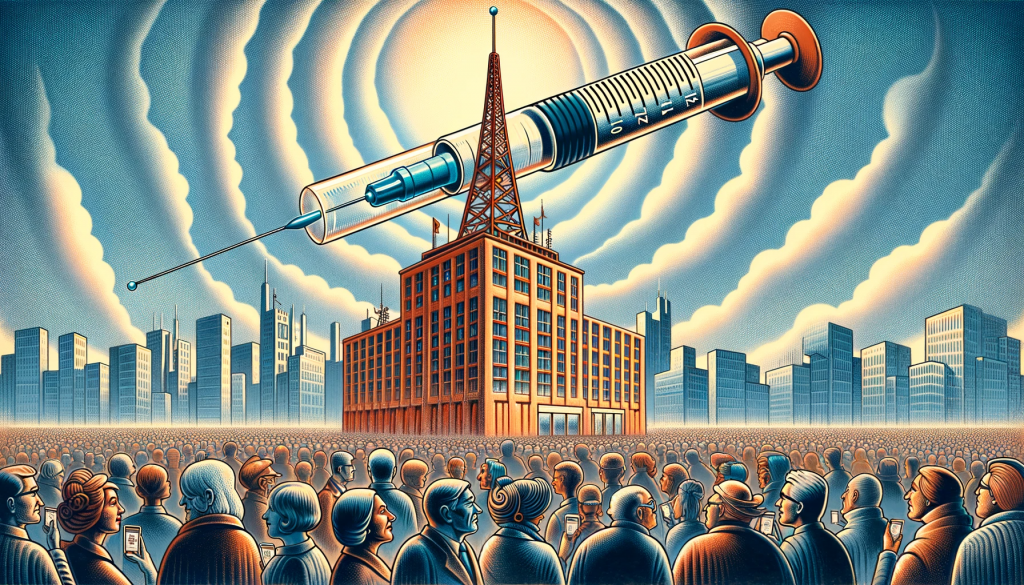
Uses and Gratifications Theory
The Uses and Gratifications Theory Model in mass communication is a pivotal concept that examines why and how people actively seek out specific media to satisfy specific needs. This theory is a cornerstone in understanding audience behavior and media consumption patterns, making it a fundamental topic in mass communication studies. For example, a person may turn to social media platforms for entertainment, thereby satisfying their need for leisure and relaxation. This model is instrumental in shaping strategies in various mass communication fields, such as advertising, journalism, and public relations, to cater effectively to audience preferences.
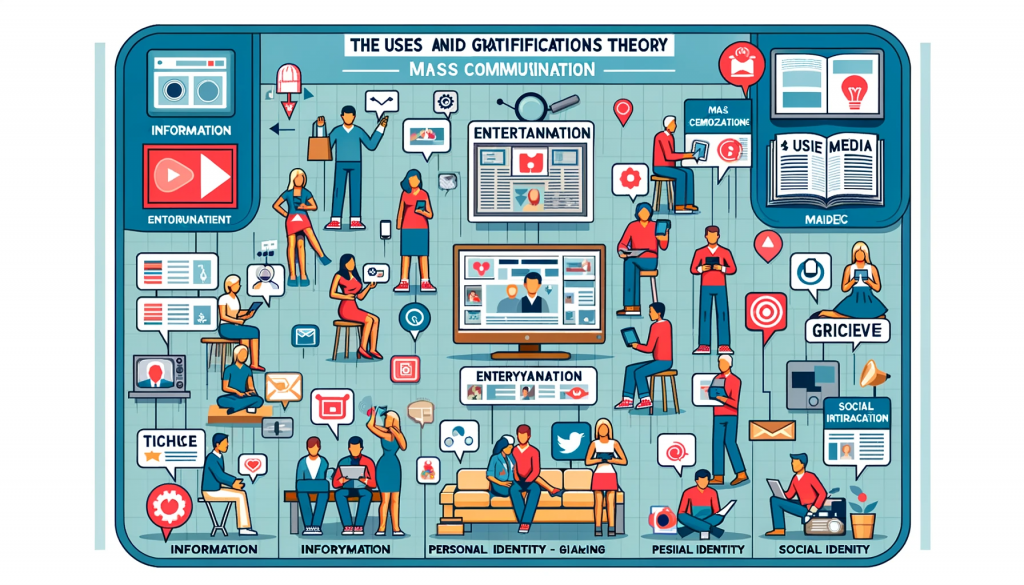
Two-Step Flow Theory
The Two-Step Flow Theory model, a cornerstone concept in Mass Communication Theories, emphasizes the pivotal role of opinion leaders in the dissemination of information. In essence, it posits that information from the media moves in two distinct stages: initially to the opinion leaders and subsequently to a broader audience. This theory is particularly relevant in understanding the dynamics of influence in modern mass communication channels.
Example: In a Mass Communication Scenario, consider a popular blogger who reviews a new smartphone. Their dedicated followers, viewing the blogger as a credible source, are likely to be influenced by this review. Subsequently, these followers discuss and share their opinions within their social circles, further spreading the message. This exemplifies the two-step flow, where the blogger acts as the opinion leader, filtering and interpreting the media message before it reaches a wider audience.

Cultivation Theory
Cultivation Theory, a pivotal concept in mass communication, suggests that long-term exposure to media content shapes viewers’ perceptions of reality. This theory is instrumental in explaining how television and other media forms influence societal beliefs and attitudes. For example, frequent portrayal of violence on TV might lead viewers to perceive a higher level of danger in their daily lives, even if their personal experiences do not support this. This theory underscores the significant role of media in forming collective consciousness and is essential in mass communication studies, particularly in television and broadcasting mass communication. It’s a vital tool for professionals in journalism mass communication, media planners, and content creators to understand the profound impact of their work on public perception and societal norms.
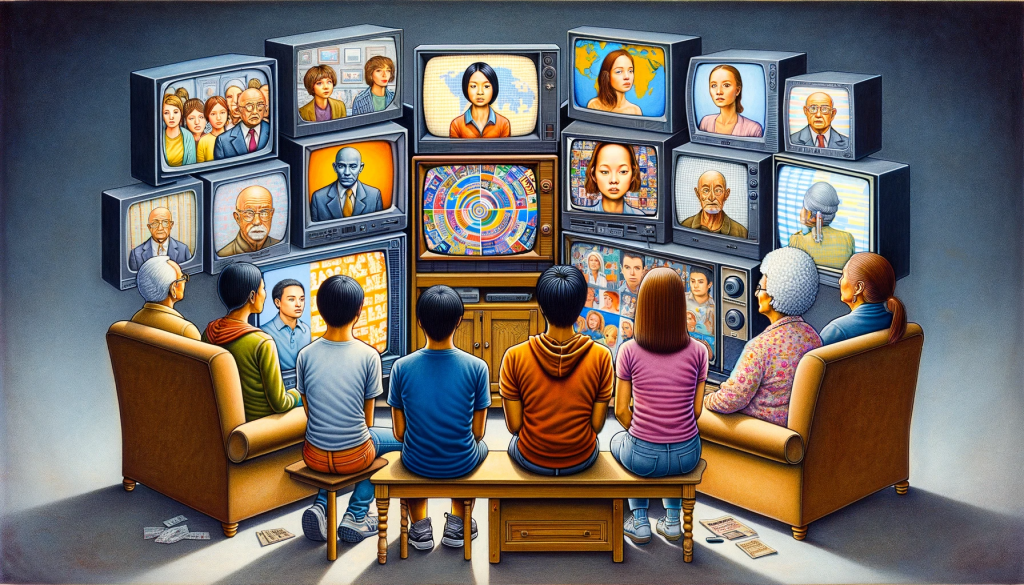
Agenda-Setting Theory
Agenda-Setting Theory fundamentally shapes our perception of reality. This principle in Mass Communication emphasizes the power of media to influence the public’s focus on specific topics. For instance, during election seasons, media coverage often dictates which issues voters perceive as most important. By consistently highlighting certain topics, like healthcare or immigration, news outlets effectively set the agenda for public discourse and priorities. This example demonstrates the theory’s significant impact on shaping societal concerns and opinions.

Framing Theory
Framing Theory, a fundamental concept in mass communication, explores how media shapes public perception by presenting information in specific contexts or “frames.” This theory highlights the influence of media in guiding audience interpretation of events or issues, emphasizing the power of media framing in shaping societal understanding.
Example: Consider a news report on climate change. If the report focuses on the economic costs of environmental policies (framing the issue in terms of financial impact), it significantly influences public opinion differently than if the report highlights the environmental consequences of inaction (framing the issue in terms of ecological impact). By choosing particular angles or aspects to emphasize, media outlets can subtly guide audience attitudes and beliefs, showcasing the profound effect of Framing Theory in mass communication in real life.
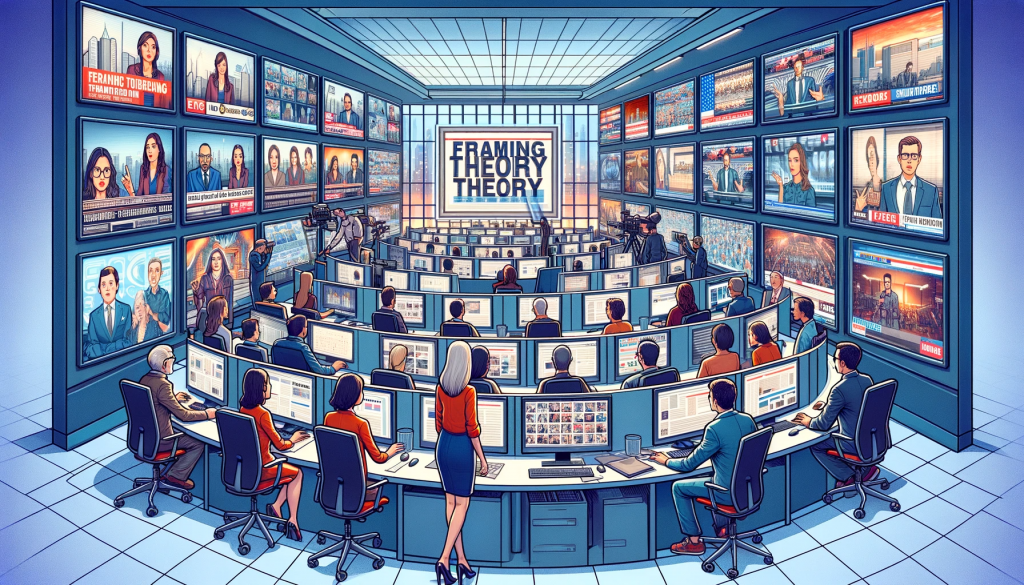
Social Learning Theory
Social Learning Theory plays a pivotal role in Mass Communication. It posits that individuals learn behaviors and norms through observing others within their social environment, which is especially relevant in today’s media-saturated world. This theory is crucial in understanding how media content influences public behavior and perceptions.
Example: In a mass communication scenario, consider a television campaign promoting healthy eating habits. Viewers, especially young audiences, observe and emulate the behaviors and choices of the characters portrayed. This leads to a change in their own eating habits, demonstrating the powerful impact of social learning through mass media.
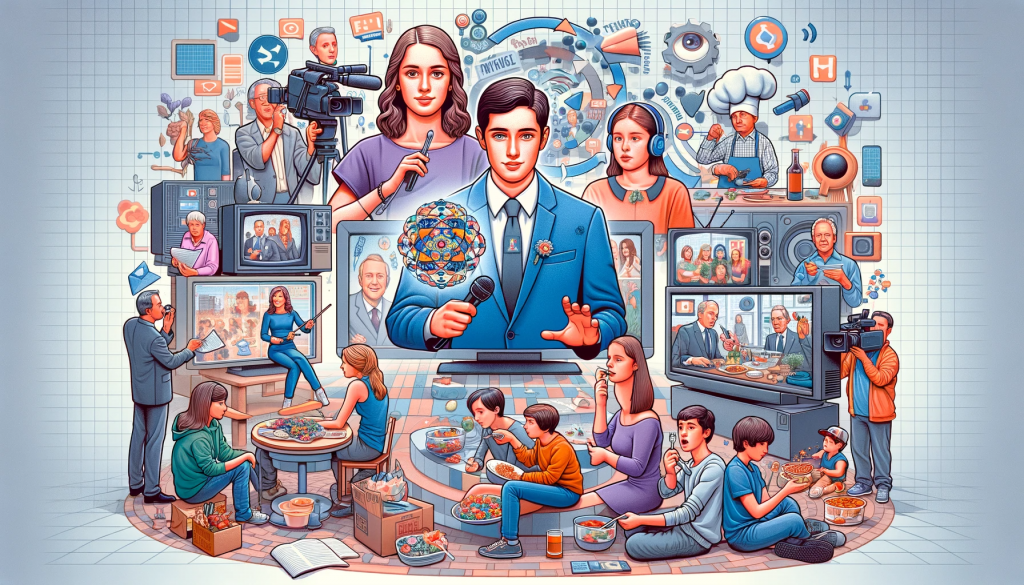
Encoding/Decoding Model
The Encoding/Decoding Model plays a pivotal role in Mass Communication, elucidating how messages are conveyed and interpreted. This model highlights the process where a sender encodes a message, which is then decoded by the receiver. In Mass Communication scenarios, this concept is crucial for effective message transmission.
Example: In a Mass Communication course, a professor explains advertising strategies using real-life examples. The students decode this information, applying it to their own project designs. This process demonstrates the practical application of the Encoding/Decoding Model in an educational setting, emphasizing its importance in understanding communication dynamics.
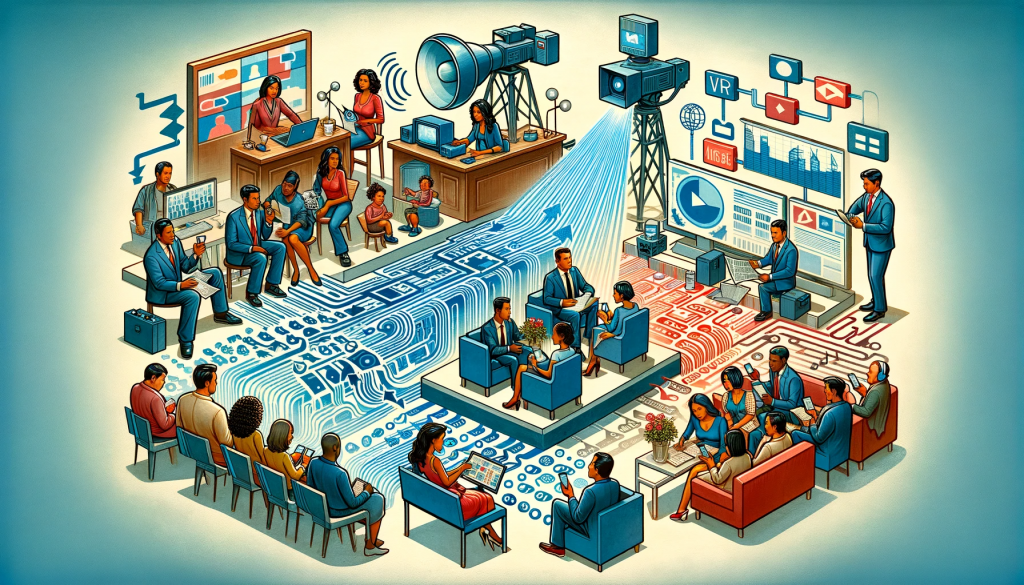
Third-Person Effect Theory
The Third-Person Effect Theory is a pivotal concept in Mass Communication Theories. It posits that individuals tend to believe that mass media messages have a greater effect on others than on themselves. This perception often leads to behavioral changes, such as support for media censorship. A classic example is observed in advertising campaigns. People may assume that while they are immune to persuasive ads, others are easily influenced, thus supporting stricter advertising regulations. This theory is crucial in understanding the dynamics of media influence in Mass Communication in Real Life, shaping public opinion and media policies.

Gatekeeping Theory
Gatekeeping Theory is a fundamental concept in Mass Communication. It illustrates how information is filtered and controlled by media channels before reaching the public. This theory is vital in understanding the power dynamics of media, especially in the digital age where information overload is common. For example, a news editor decides which stories are newsworthy for the evening broadcast, reflecting gatekeeping in action. This selection process influences public perception and highlights the significant impact of media gatekeepers in shaping societal narratives. Understanding Gatekeeping Theory is crucial for professionals in journalism, broadcasting, and digital media, as it reveals the intricate process of information dissemination in our media-saturated world.
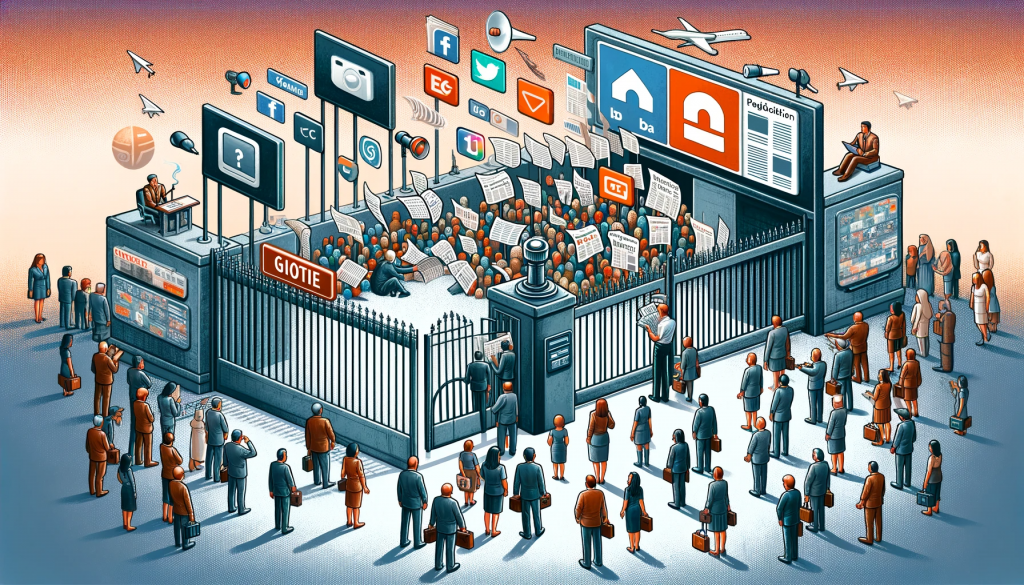
In the dynamic field of mass communication, grasping its core concepts and real-world applications is essential. Whether exploring Mass Communication Jobs/Careers or delving into the intricate Models of Mass Communication, understanding these elements is crucial for success. Mass communication transcends traditional boundaries, influencing sectors from Journalism Mass Communication to digital platforms. Embracing its diversity and multifaceted nature not only enhances our comprehension but also opens doors to numerous opportunities in this ever-evolving landscape.



